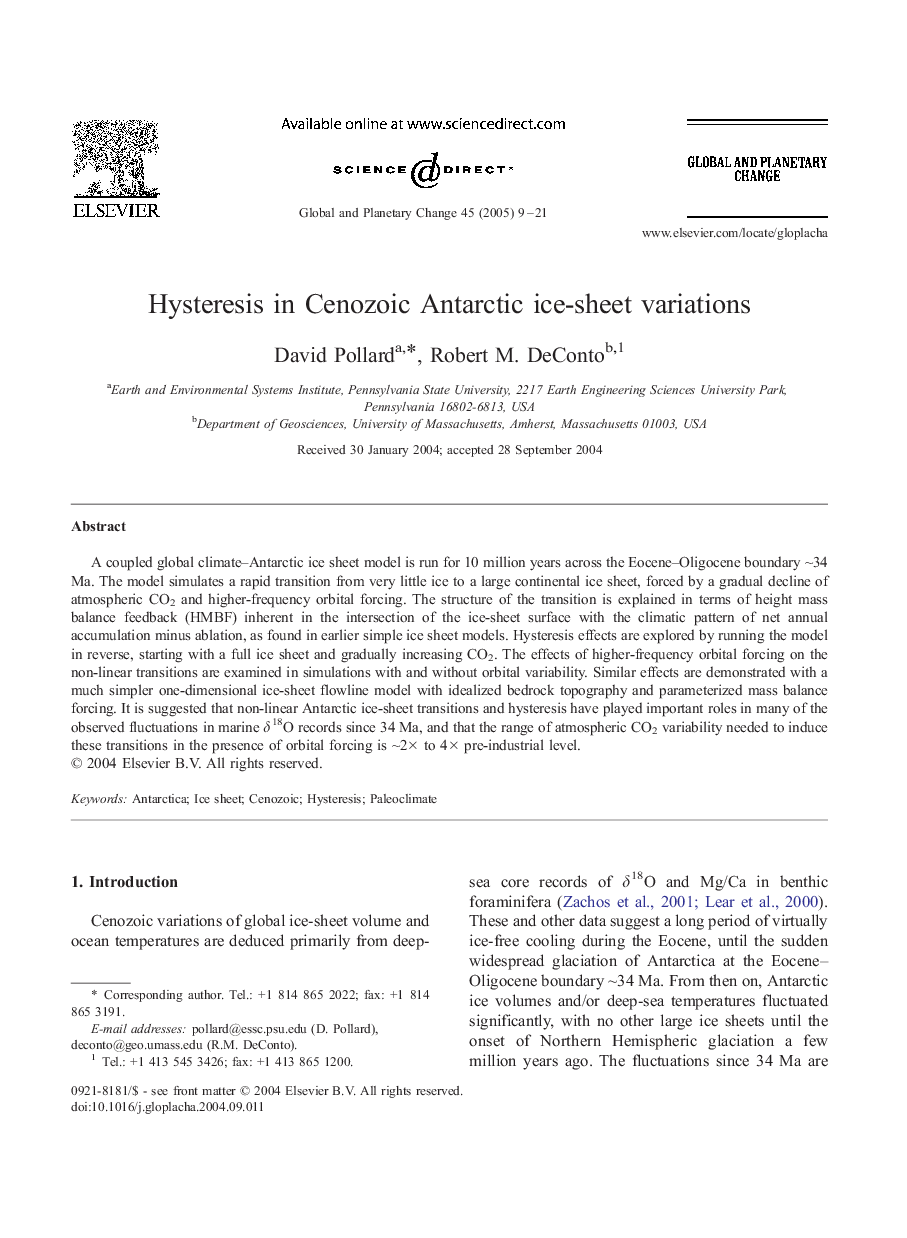| Article ID | Journal | Published Year | Pages | File Type |
|---|---|---|---|---|
| 9462461 | Global and Planetary Change | 2005 | 13 Pages |
Abstract
A coupled global climate-Antarctic ice sheet model is run for 10 million years across the Eocene-Oligocene boundary â¼34 Ma. The model simulates a rapid transition from very little ice to a large continental ice sheet, forced by a gradual decline of atmospheric CO2 and higher-frequency orbital forcing. The structure of the transition is explained in terms of height mass balance feedback (HMBF) inherent in the intersection of the ice-sheet surface with the climatic pattern of net annual accumulation minus ablation, as found in earlier simple ice sheet models. Hysteresis effects are explored by running the model in reverse, starting with a full ice sheet and gradually increasing CO2. The effects of higher-frequency orbital forcing on the non-linear transitions are examined in simulations with and without orbital variability. Similar effects are demonstrated with a much simpler one-dimensional ice-sheet flowline model with idealized bedrock topography and parameterized mass balance forcing. It is suggested that non-linear Antarctic ice-sheet transitions and hysteresis have played important roles in many of the observed fluctuations in marine δ18O records since 34 Ma, and that the range of atmospheric CO2 variability needed to induce these transitions in the presence of orbital forcing is â¼2à to 4à pre-industrial level.
Related Topics
Physical Sciences and Engineering
Earth and Planetary Sciences
Earth-Surface Processes
Authors
David Pollard, Robert M. DeConto,
